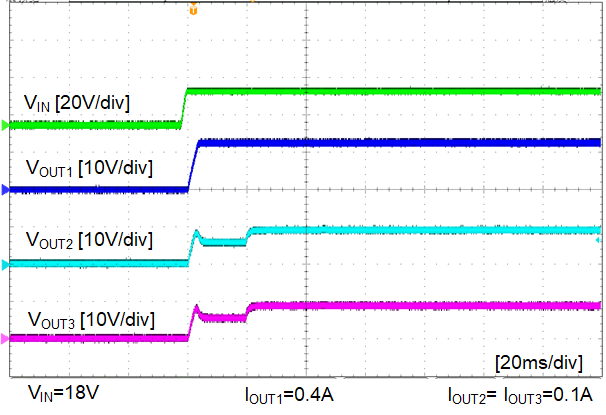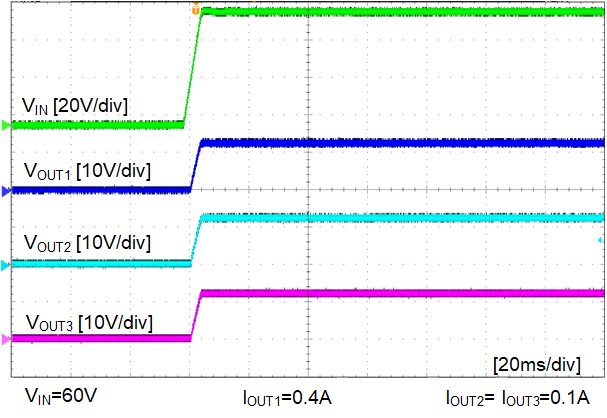SNVAA82 august 2023 LMR38020
5.2 Start Up
 Figure 5-7 Start Up When VIN=16 V, Full Load
Figure 5-7 Start Up When VIN=16 V, Full Load Figure 5-8 Start Up When VIN=60 V, Full Load
Figure 5-8 Start Up When VIN=60 V, Full LoadFigure 5-7 and Figure 5-8 show typical start-up behavior. The secondary output voltage tracks the primary output voltage during the soft start sequence.
The secondary voltages' drop during startup for about 18ms can be explained by the IC OCP blaning time (please refer to the data sheet). The heavier secondary load lighter primary load brings more secondary voltage drops during this time. Adding a small amount of preload on the primary side can help reduce these secondary voltage drop during startup..